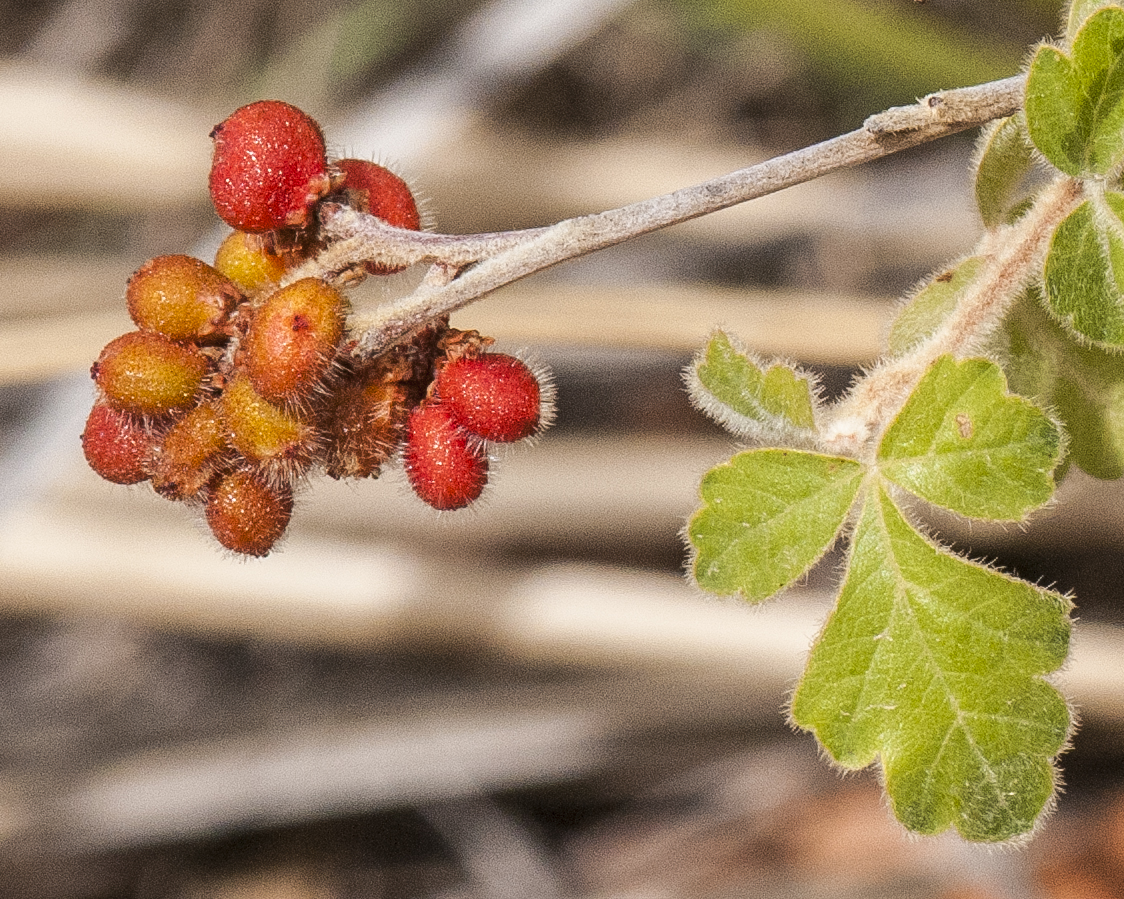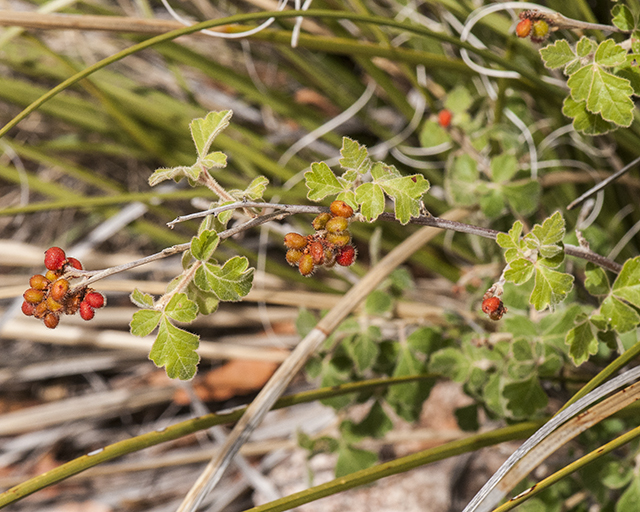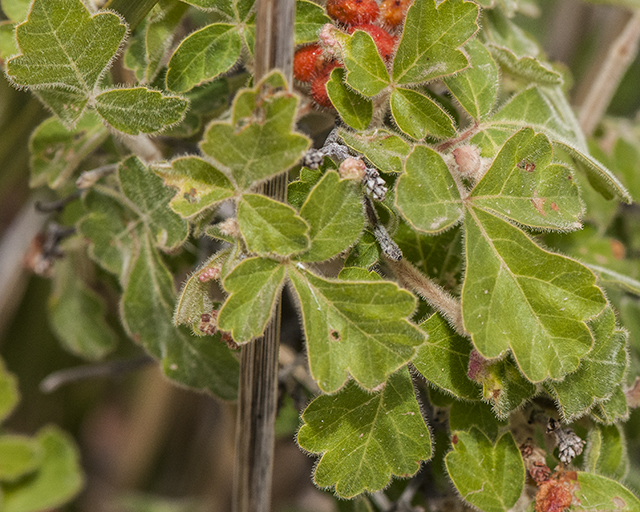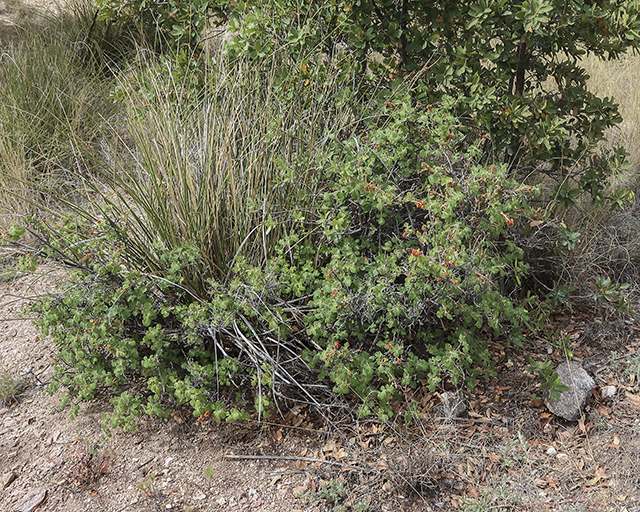Wildflowers of Southern Arizona
Fragrant Sumac.
Rhus aromatica var.trilobata.
Cashew (Anacardiaceae) family.
Duration: Perennial. Nativity: Native. Lifeform: Shrub. General: Shrub with spreading branches, sometimes in thickets reaching 3 m tall; gray, lenticular bark; brown, puberulent to glabrate. Leaves: Trifoliate to palmately lobed, to simple and unlobed; 8-15 mm petioles, cuneate bases, sometimes narrowly so, terminal leaflet 15-35 mm long, 7-25 mm wide, thin, deciduous, reddish in fall. Flowers: Ovate pinkish sepals, obovate pale yellow petals, to 3 mm long. Fruits: Lenticular-orbicular berry, 6-8 mm in diameter, dull orange to dark reddish, villous to short glandular pubescent. Ecology: Found on dry slopes and in canyons, often among chaparral from 2,500-7,500 ft (762-2286 m); flowers March-August. Distribution: Most of N.America; from Alberta, CAN, south to s CA, east to MD; south to s MEX. Ethnobotany: Bark and berries used medicinally, leaves were smoked, used for stomachaches, for itching, Fruit sour but edible, often mixed with water for a refreshing beverage. Also made into jam, prepared with meat, made into cakes, and even ground into a meal, after drying in the sun and used as flour and stored. Wild and tended forms very different, so that tended shrubs have long, straight shoots used in basketry. Etymology: Rhus is derived from rhous, a Greek work for sumac, while aromatica means fragrant.
Santa Catalina Mountains
Prison Camp.
Location: Arizona Trail 0.1 mile past end of campground road.
5/10/17
See SEINet Pictures and Description
See FireFly Forest Pictures and Description





